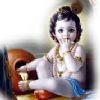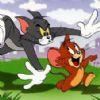Originally posted by: -Srushti-
Hi Minaxi😳...Thanks yaara😃
I love when he says that he loves them equally...Only Mahadev can say that...he loves every creature...however grotesque and ubearable they might be...That is Shiva ...and that is why he is Mahadev...I love the expressions that he gets when that Lotus is washed awayat his feet...and he picks it up...you cant help falling in love with him...😳
Petu..so you have landed here firmly😛
Hi Srushti😊 you are welcome😃
True only Mahadevji can say that he loves them all equally, when Pret told him, let's go to smashaan, showed how comfertable he makes his devotee feel. There is no vidhi-vidhan required for his worship as per Daksha, shows how simple & easyly approachable he is, that's
why he is Mahadev.
That flower scene & the music, the chant everything makes you fall in love with Mahadev & the show.😊
**********************************************************************************************************************
\|/ Har Har Mahadev \|/
Karpur gauram karunavtaram sansar saarm bhujagendra haram I
Sada vasanam hrdayarvinde Bhavam Bhavani sahitam namami II
I bow to that camphor-hued, white complexioned (Lord Shiva), who is Incarnation of compassion, Who is the very essence of (consciousness; the Knowing principle) of life (of the embodied soul);Who wears snakes as garlands, whose eternal abodes in the heart of the devotee, I bow to Him (Lord Shiva) and His consort Bhavaani (Uma or Parvati)
Devon Ke Dev Mahadev
Lord Shiva or known as Devadhi dev Mahadev(the God of the Gods) is regarded as the representation of the Supreme Being. He is known as the third element in the Hindu Trinity (Trimurti), the other two members being Lord Brahma - the creator and Lord Vishnu - the protector. Shiva is the destructive form of the Almighty. As the cycle of destruction and recreation is always in a circle, Shiva's primary responsibility is maintaining the life cycle. Scholars say, as the Mahakaal, Shiva destroys and dissolves everything into nothingness but as Shankara, he also reproduces that which has been destroyed and dissolved
Lord Shiva is known to have many forms, some of them are Aghora, Ishana, Tat Purusha, Vama Deva, Nataraja and Rudra. These forms are believed to be present in the world in different places. The form of 'Aghora' resides in places of cremation, 'Ishana' in Shivalinga and 'Vama Deva' in the meditation posture. 'Tat Purusha' is the eternal form and 'Rudra' is the angry form. The 'Nataraja' form of Shiva is the form he takes when he dances. His dance represents both creation and destruction. Through his Nataraja form, he appears before his devotees and also kills the asura of ignorance. His dance also creates energy which can give birth to new life.
Another form, Mahamrityunjaya, also refers to Lord Shiva. Through this form, he is believed to conquer death. The Mahamriyunjaya mantra is considered to be very powerful and sacred, that is why it is considered the most important after the Gayatri mantra.
Lord Shiva is also said to be inseparable from Shakti, Sati / Parvati the daughter of Himalaya - Menaka. There is no Shiva without Shakti and no Shakti without Shiva, the two are one - or the absolute state of being.
According to a legend in the Puranas, Brahma was ineffective of making creation. He propitiated Shiva who appeared in Ardhanarishwar form and separated Goddess Shakti from his body. Godess Shakti has numerous incarnations, like Sati, Kali, Durga, and Uma. Their sons are Kartikeya and Ganesh
He is moody, free of inhibitions, easy to please, protector of the down trodden, and has the power to alter the laws of destiny. Thus, it is Lord Shiva is known as the God of mercy and kindness, the Bholenaath. He protects his devotees from all evil that are always around us. He blesses his followers with grace, knowledge and peace.
Symbolism of Shiva
The unclad body covered with ashes: Since most things reduce to ashes when burned, ashes symbolize the physical universe. The ashes on the unclad body of the Lord signify that Shiva is the source of the entire universe which emanates from Him, but He transcends the physical phenomena and is not affected by it.
Matted locks: Lord Shiva is the Master of yoga. The three matted locks on the head of the Lord convey the idea that integration of the physical, mental and spiritual energies is the ideal of yoga.
Ganga: Ganga, symbolically represented on the head of the Lord with a jet of water emanating from her mouth and falling on the ground, signifies that the Lord destroys sin, removes ignorance, and bestows knowledge, purity and peace on the devotees.
The crescent moon: The crescent moon is only one of His ornaments, and not an integral part of Him.
Three eyes: Lord Shiva, also called Tryambaka Deva (literally, "three-eyed Lord"), is depicted as having three eyes: the sun is His right eye, the moon the left eye and fire the third eye. The two eyes on the right and left indicate His activity in the physical world. The third eye in the center of the forehead symbolizes spiritual knowledge and power, and is thus called the eye of wisdom or knowledge. Like fire, the powerful gaze of Shiva's third eye annihilates evil, and thus the evil-doers fear His third eye.
Half-open eyes: when the Lord opens His eyes, a new cycle of creation emerges and when He closes them, the universe dissolves for creation of the next cycle. The half-open eyes convey the idea that creation is going through cyclic process, with no beginning and no end..
Kundalas: two Kundalas, Alakshya (meaning "which cannot be shown by any sign") and Niranjan (meaning "which cannot be seen by mortal eyes") in the ears of the Lord signify that He is beyond ordinary perception. Since the kundala in the left ear of the Lord is of the type used by women and the one in His right ear is of the type used by men, these Kundalas also symbolize the Shiva and Shakti (male and female) principle of creation.
Snake around the neck: sages have used snakes to symbolize the yogic power of Lord Shiva with which He dissolves and recreates the universe.A snake (Vasuki)is shown curled three times around the neck of the Lord and is looking towards His right side. The three coils of the snake symbolize the past, present and future - time in cycles. The Lord wearing the curled snake like an ornament signifies that creation proceeds in cycles and is time dependent, but the Lord Himself transcends time.
Rudraksha necklace: Rudra is another name of Shiva. Rudra also means "strict or uncompromising" and aksha means "eye." Rudraksha necklace worn by the Lord illustrates that He uses His cosmic laws firmly - without compromise - to maintain law and order in the universe. The necklace has 108 beads which symbolize the elements used in the creation of the world.
Varda Mudra: the Lord's right hand is shown in a boon- bestowing and blessing pose. As stated earlier, Lord Shiva annihilates evil, grants boons, bestows grace, destroys ignorance, and awakens wisdom in His devotees.
Trident (Trisula): a three-pronged trident shown adjacent to the Lord symbolizes His three fundamental powers (shakti) of will (iccha), action (kriya) and knowledge (jnana). The trident also symbolizes the Lord's power to destroy evil and ignorance.
Damaru (drum): a small drum with two sides separated from each other by a thin neck-like structure symbolizes the two utterly dissimilar states of existence, unmanifest and manifest. When a damaru is vibrated, it produces dissimilar sounds which are fused together by resonance to create one sound. The sound thus produced symbolizes Nada, the cosmic sound of AUM, which can be heard during deep meditation. According to Hindu scriptures, Nada is the source of creation.
Kamandalu: a water pot (Kamandalu) made from a dry pumpkin contains nectar and is shown on the ground next to Shiva.
Nandi: the bull is associated with Shiva and is said to be His vehicle. The bull symbolizes both power and ignorance. Lord Shiva's use of the bull as a vehicle conveys the idea that He removes ignorance and bestows power of wisdom on His devotees.
Tiger skin: a tiger skin symbolizes potential energy. Lord Shiva, sitting on or wearing a tiger skin, illustrates the idea that He is the source of the creative energy that remains in potential form during the dissolution state of the universe. Of His own Divine Will, the Lord activates the potential form of the creative energy to project the universe in endless cycles.
Cremation ground: Shiva sitting in the cremation ground signifies that He is the controller of death in the physical world. Since birth and death are cyclic, controlling one implies controlling the other. Thus, Lord Shiva is revered as the ultimate controller of birth and death in the phenomenal world

Lord Shiva's worship
The supreme Shiva is Rudra (or hollow) and is formless. This supreme Shiva is represented by the Shiva Lingam and is pronounced by the universal word ? (Aum). The Shiva Lingam is full of mysteries and tales and myths, some of which are even baseless. Nevertheless, this is one of the most popular form in which the Lord is worshipped.
Shiva Lingam
The Sanskrit word 'Lingam' means symbol. Thus the literal meaning of Shiva Lingam is the symbol of Shiva. The Supreme Shiva doesn't have a form and every form is his form. The Shiva Lingam represents him, the Supreme Shiva who is formless. The way when we see a smoke, we infer the presence of fire, the moment we see Shiva Lingam we immediately visualize the existence of the Supreme Shiva.
The Lingam Purana states,the foremost Lingam which is devoid of colour, taste, hearing, touch etc is spoken of as Prakriti or nature. The nature itself is a Lingam (or symbol) of Shiva. When we see nature, we infer the presence of its creator ' Shiva. Shiva Lingam is the mark of Shiva the creator, Shiva the sustainer and Shiva the destructor.
Another authentic reference comes from Skanda Purana where lingam is clearly indicated as the supreme Shiva from where the whole universe is created and where it finally submerge. The endless sky (that great void which contains the entire universe) is the Linga, the Earth is its base. At the end of time the entire universe and all the Gods finally emerge in the Linga itself.
Forms of Shiva Lingam
Chala Lingam (Moveable Lingam)
The Chala Lingams may be kept in the shrine of one's own home for worship or prepared temporarily with materials like sand, clay, dough or rice for worship and dispensed with after the worship. Another form of the Chala Lingams can also be worn on the body as a pendent in the necklace etc. Chala Lingams are often made of quartz, mercury or metals.
Achala Lingam (Fixed Lingam)
Achala Lingams (or fixed Lingams) are installed in temples and are un-moveable once they are installed. There are rigid rules for achala Lingams which must be followed. Achala Lingams must be offered prayers at fixed times and without failed and greater sanctity is maintained. Usually Lingams are made of black stones.
The Appearance and significance of Shiva Lingam
A Shiva Lingam is generally made up of black or white stones, marbles or metals or Quartz. A Shiva Lingam has three distinct parts which are considered as portions of Brahma, Vishnu and Shiva. The Lower part represents Brahma, the middle Vishnu and the upper and the most prominent represents Shiva. Thus Shiva Lingam represents all the three powers in one- as the Param Braham or Supreme Shiva.
Another interpretation considers Shiva Lingam to be divided in two parts ' Shiva and Shakti. Thus Shiva Lingam are symbols to represent the aspects of the Supreme Shiva. From one view Shiva is Shiva and Shakti; from another view point Shiva is Brahma, Vishnu and Mahesh (Shiva himself).
There is mysterious and indescribable power in Shiva Lingam to induce the concentration of mind. It is like the crystal glazing, mind easily attains one- pointedness by looking at the Shiva Lingam. This is the reason why ancient scholars and sages advocated the worship of Shiva Lingam and its installations in temples.
There are a Total 12 Jyotilingams in India
Somanath at Veraval in Saurashtra Mallikarjuna at Sree Sailam Mahakaaleshwar at Ujjain Omkareshwar at Madhya Pradesh Vaidyanath at Deogradh Bhimashankar at Sahyadri hills in Maharashtra Rameshwaram in southern Tamilnadu Nageshwar in Dwaraka Vishwanath at Varanasi Tryambakeshwar near Nasik Kedarnath at Himalayas
- Grishneshwar at Ellora

Mahadev & Maha Shivratri
Chandra, the moon-god, disobeyed his father-in-law, Daksha Prajapati. Daksha had given him 27 wives and told him that he should love all wives equally. Chandra, however, preferred only one of them,Rohini. An angry Daksha, therefore cursed Chandra, that he would suffer from the wasting disease. Each day, his luster would wane and eventually he would disappear forever. As a result, the Chandra started to wane. A terrified Chandra did not know what to do. Being a Deva, a sky-god, he turned to his king, Indra, and begged him for help. "The only person you can turn to is Shiva," said Indra, "because he is not a Deva. He is a Maha-Deva, greater than all gods put together."
Chandra went to Prabhas khetra, performed penance of Mahamrtunjaya mantra and prayed to Lord Shiva, at the end of which Lord Shiva appeared before him. He gave Chandra the boon that in a month, he would grow for fifteen days in one half and in the other half he would keep loosing one Kala (shade) per day and decrease in size. Shiva picked Chandra up and gently placed him on his forehead. Instantly, the moon began to wax once again. Daksha had caused Chandra to degenerate; Shiva had helped him regenerate. Chandra realized why Indra had addressed Shiva as Maha-deva. Chandra established the festival of Shiva-ratri each month, at the tail end of the waning half of the lunar month. And once a year, he established the Maha-Shiva-ratri, to mark the end of the winter months and the waxing of the summer seasons .
.
Legends behind the celebration of Maha- Shivratri
According to one of the most popular legends, Shivaratri is the wedding day of Lord Shiva and Parvati.
According to a legend, Parvati performed tapas, and prayed and Parvati meditated on this day to ward off any evil that may befall her husband on the moonless night. Since then, Mahashivaratri is believed to be an auspicious occasion for women to pray for the well-being of their husbands and sons. An unmarried woman prays for a husband like Shiva, who is considered to be the ideal husband.
It is also believed that Lord Shiva performed 'Tandava', the dance of the primal creation, preservation and destruction on this auspicious night of Shivratri.
According to another popular legend, described in Linga Purana, it was on Shivaratri that Lord Shiva manifested himself in the form of a Linga for the first time.
Since then, the day is considered to be extremely auspicious by the devotees of Shiva and they celebrate it as Maha Shivaratri - the grand night of Shiva.

The Celebration Of Mahashivratri
Maha Shivaratri is celebrated with great devotion , in honor of Lord Shiva. The festival falls on the moonless, 14th night of the new moon in the Hindu month of Phalgun (in the month of February - March, according to English Calendar). On the festival of Maha Shivaratri, devotees observe day and night fast and worship Shiva Lingam, to appease Lord Shiva.
Shiva devotees observe strict fast on Maha Shivaratri, with many people having only fruits and milk and some not even consuming a drop of water. Worshippers dutifully follow all the traditions and customs related to Shivaratri festival, as they strongly believe that sincere worship of Lord Shiva, on the auspicious day, releases a person of his sins and also liberates him from the cycle of birth and death
On Maha Shivratri, devotees wake up early in the morning and take a bath, if possible in river Ganga. After wearing fresh clothes, they visit the nearest Shiva temple, to give ritual bath to the Shiva Lingum (with milk, honey, water etc). Sandlewood paste Belpatra, fruits, flowers are offered to Lord Shiva. The worship continues the whole day and whole night. Jaagran (nightlong vigil) might also be observed in Lord Shiva temples, where a large number of devotees sing hymns and devotional songs, in praise of Lord Shiva. In the morning, devotees break their fast by partaking the prasad offered to Lord Shiva, after the aarti, the night before. Shivalingm abhishek is done while chanting 'Shiva-mahimna stotra", Rudra-ashtadhyayi, Om Namah Shivaya, Mahamriyunjaya mantra, Shiva pnchakshara stotra, Shiva sahtranaam stotram etc
Edited by mnx12 - 12 years ago





















comment:
p_commentcount